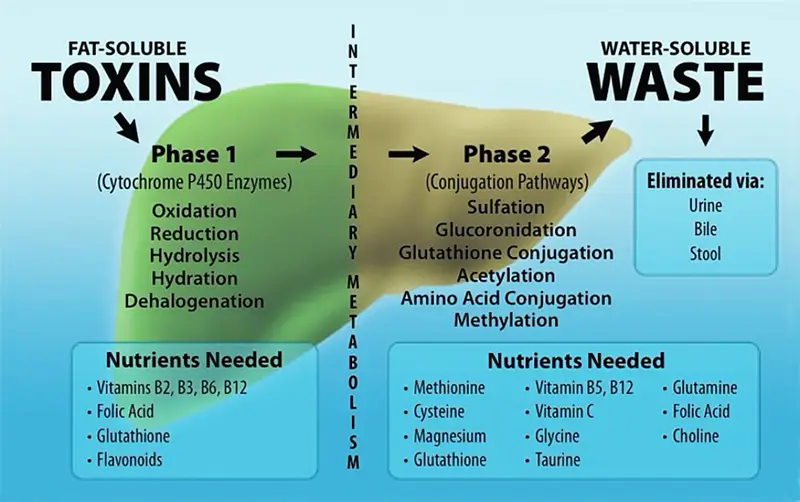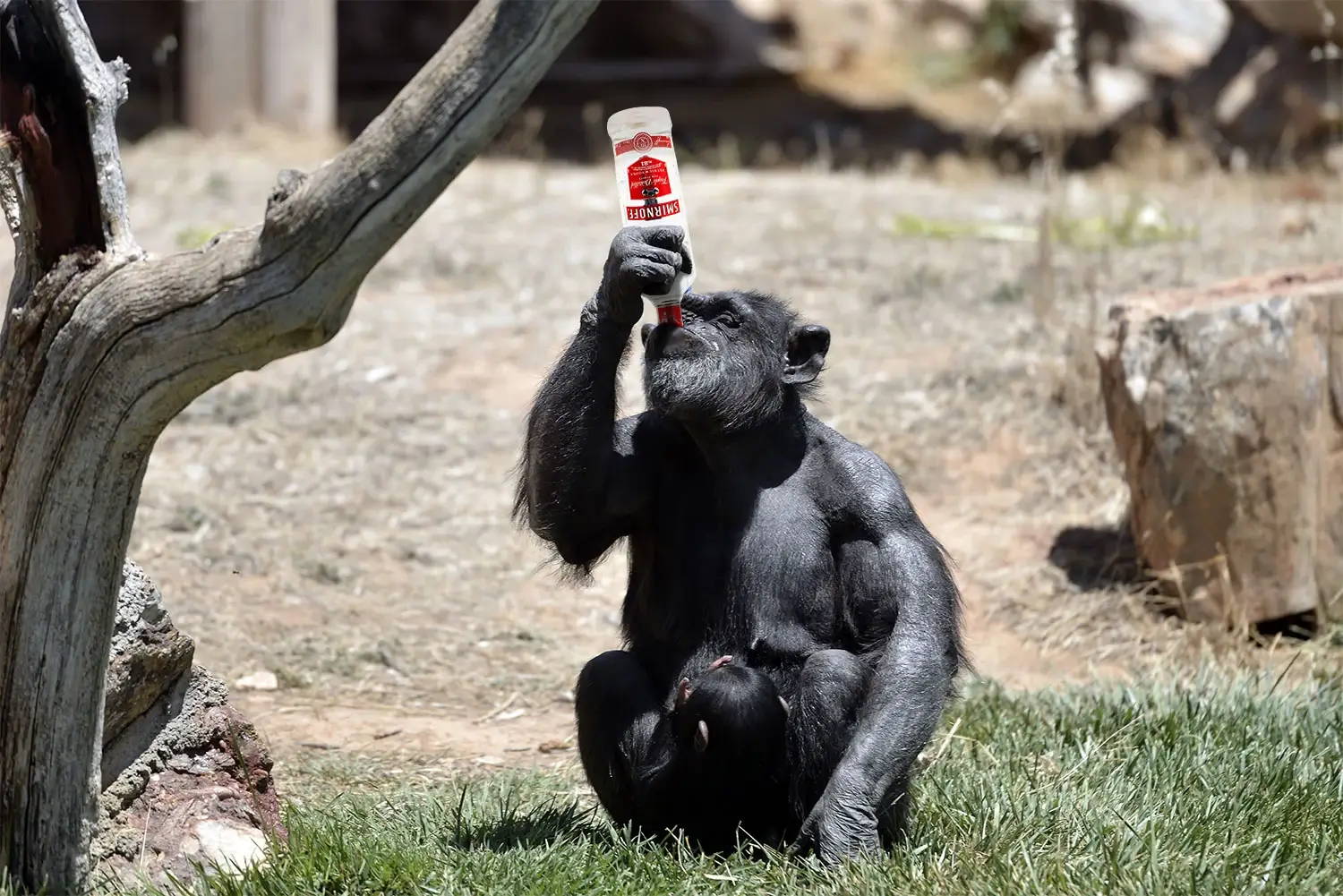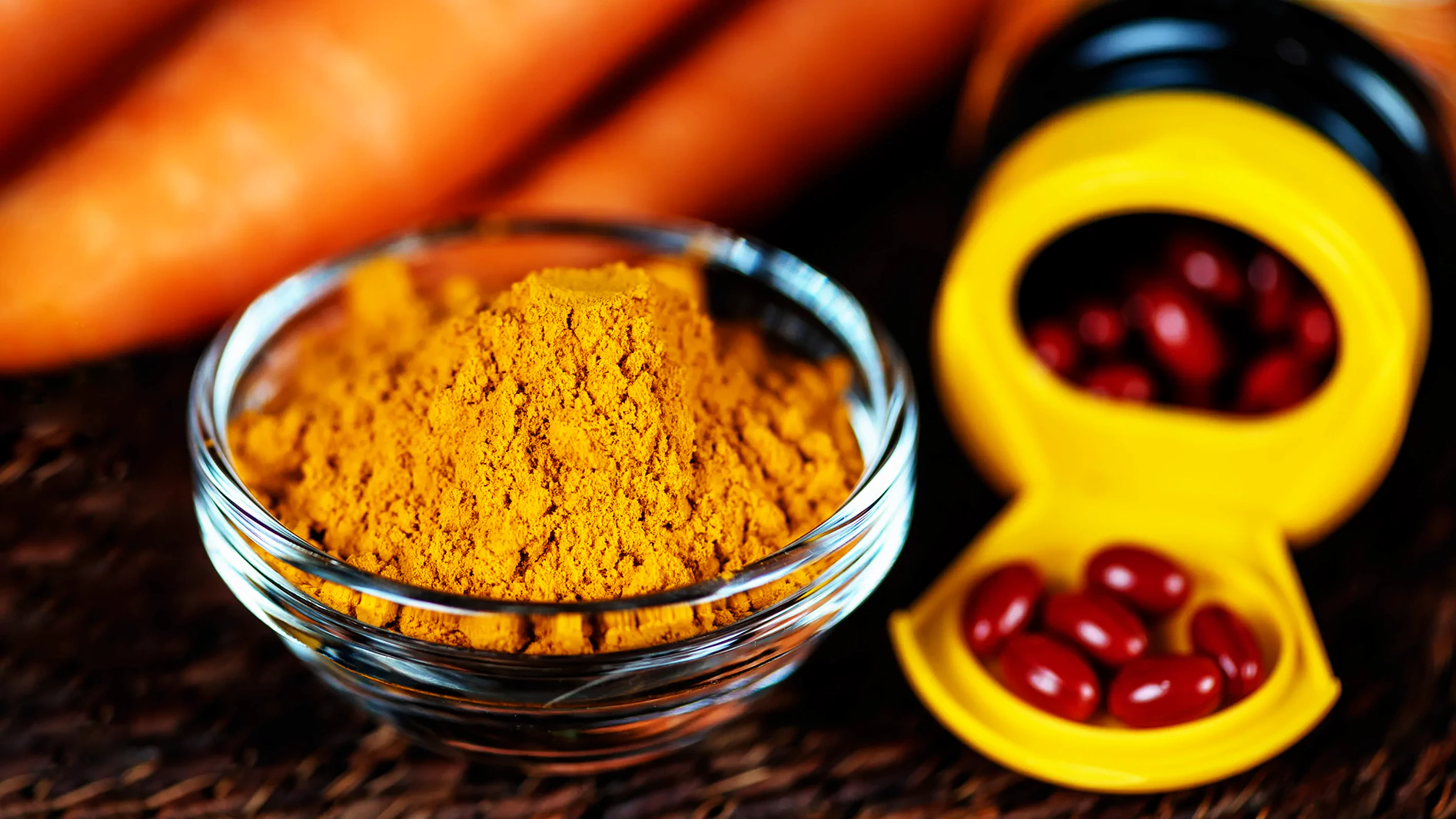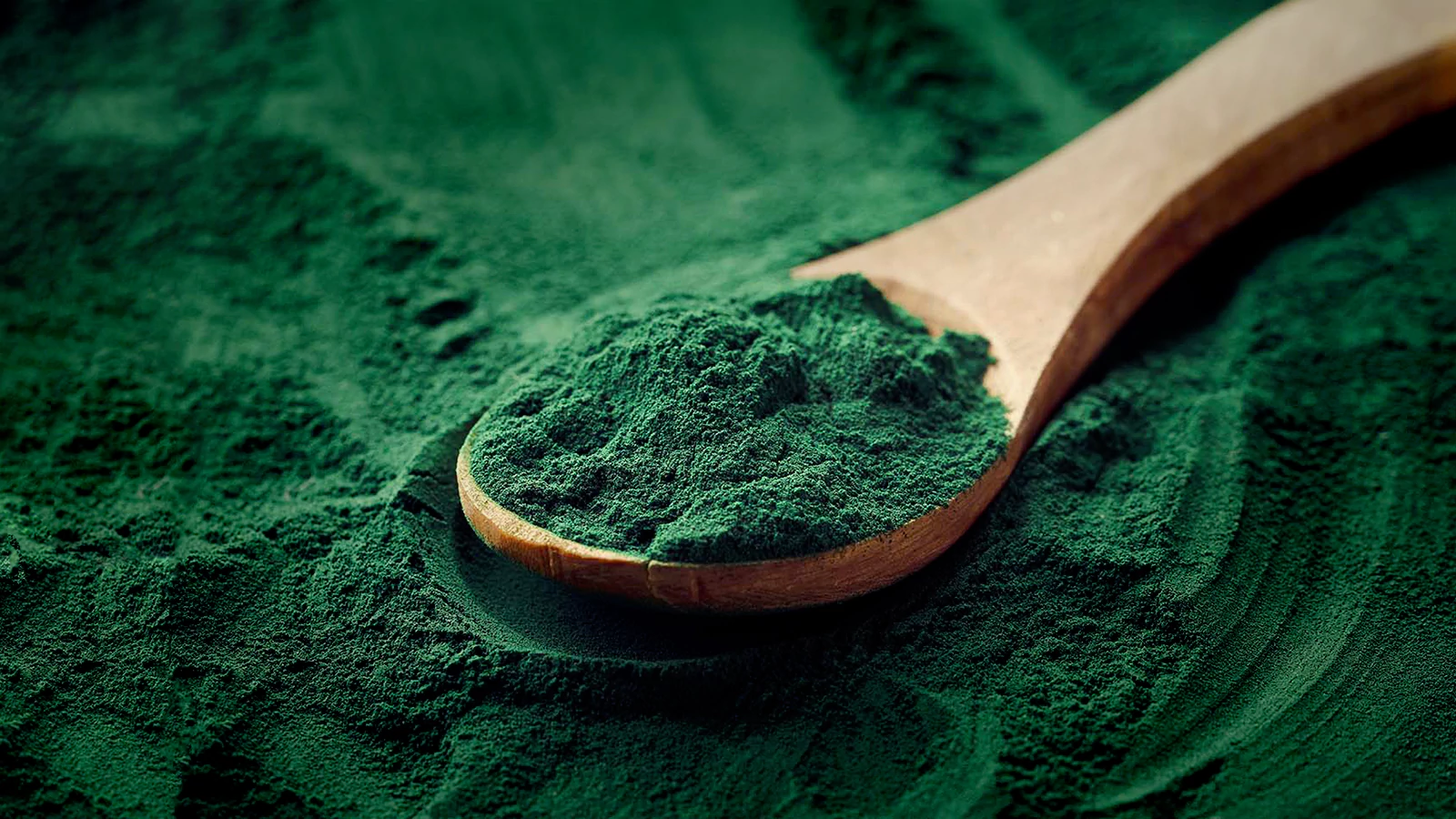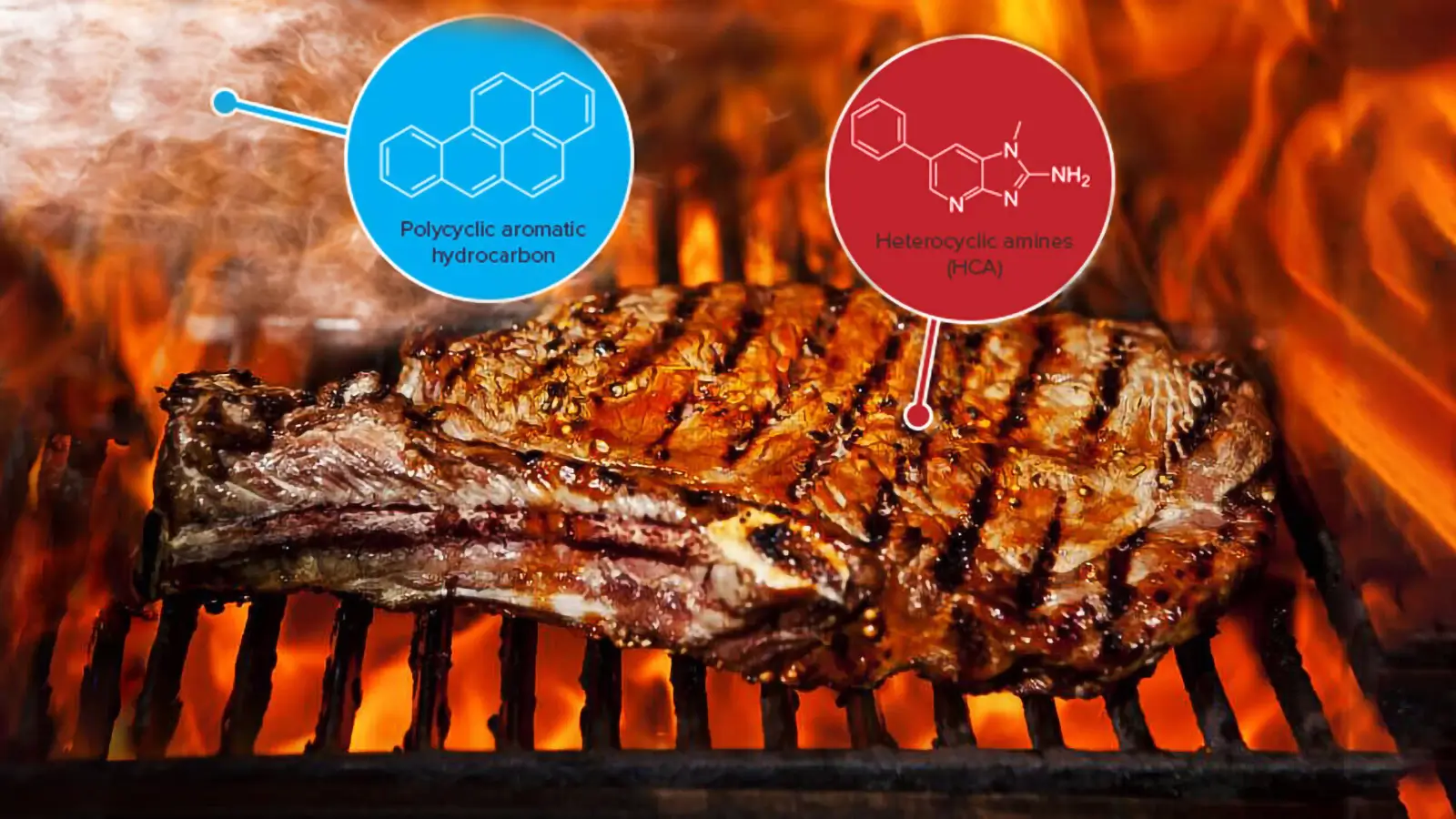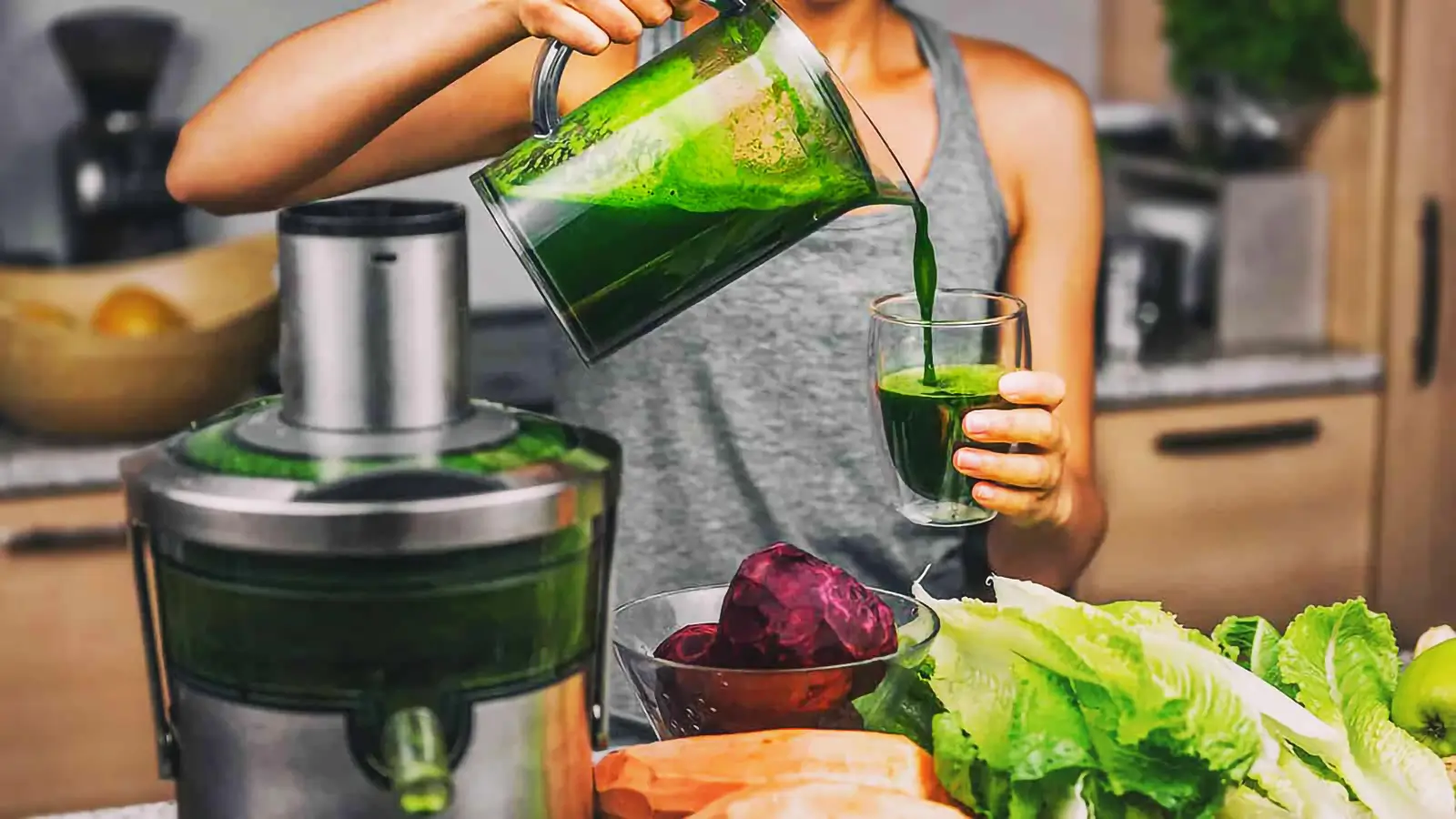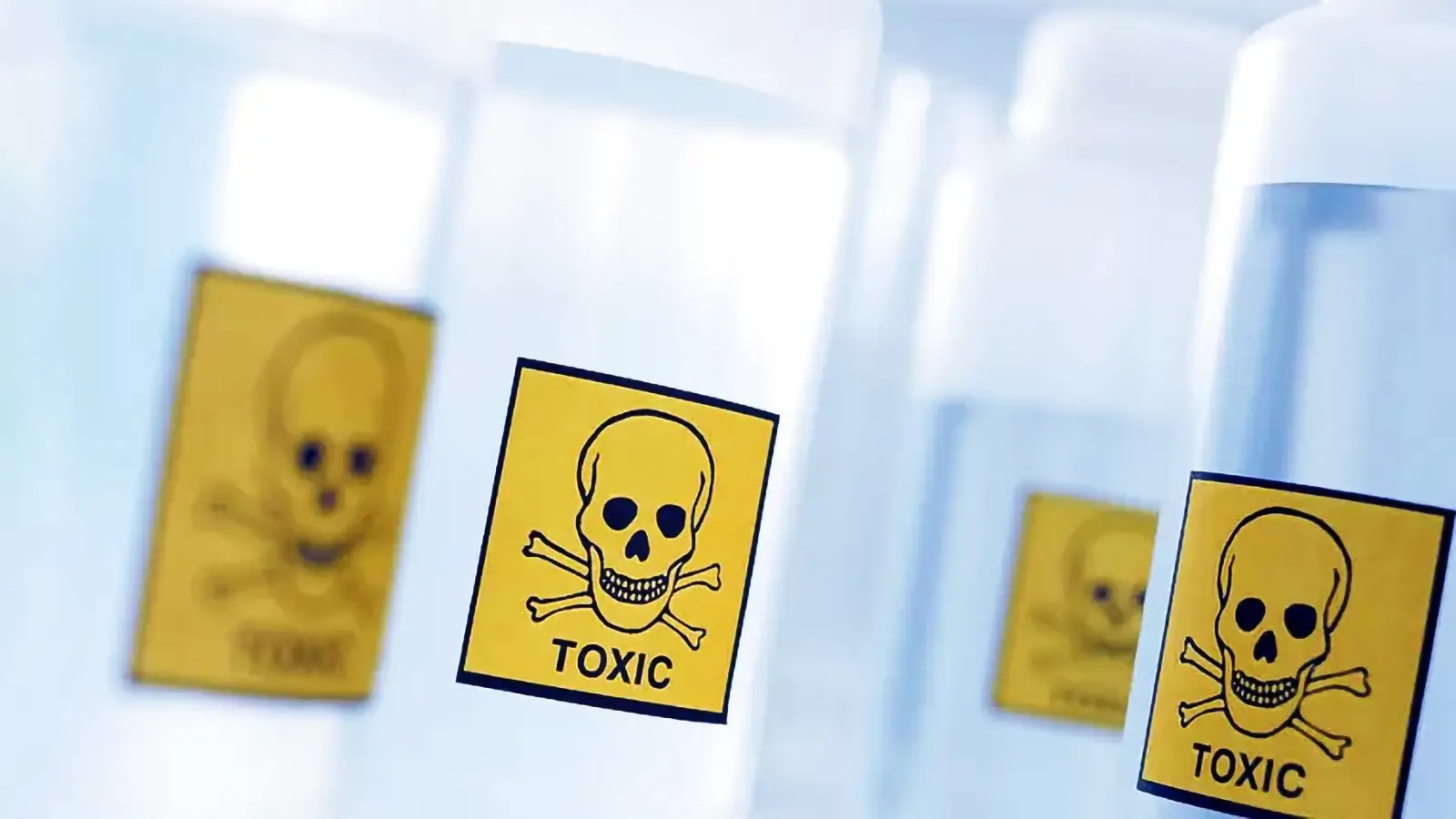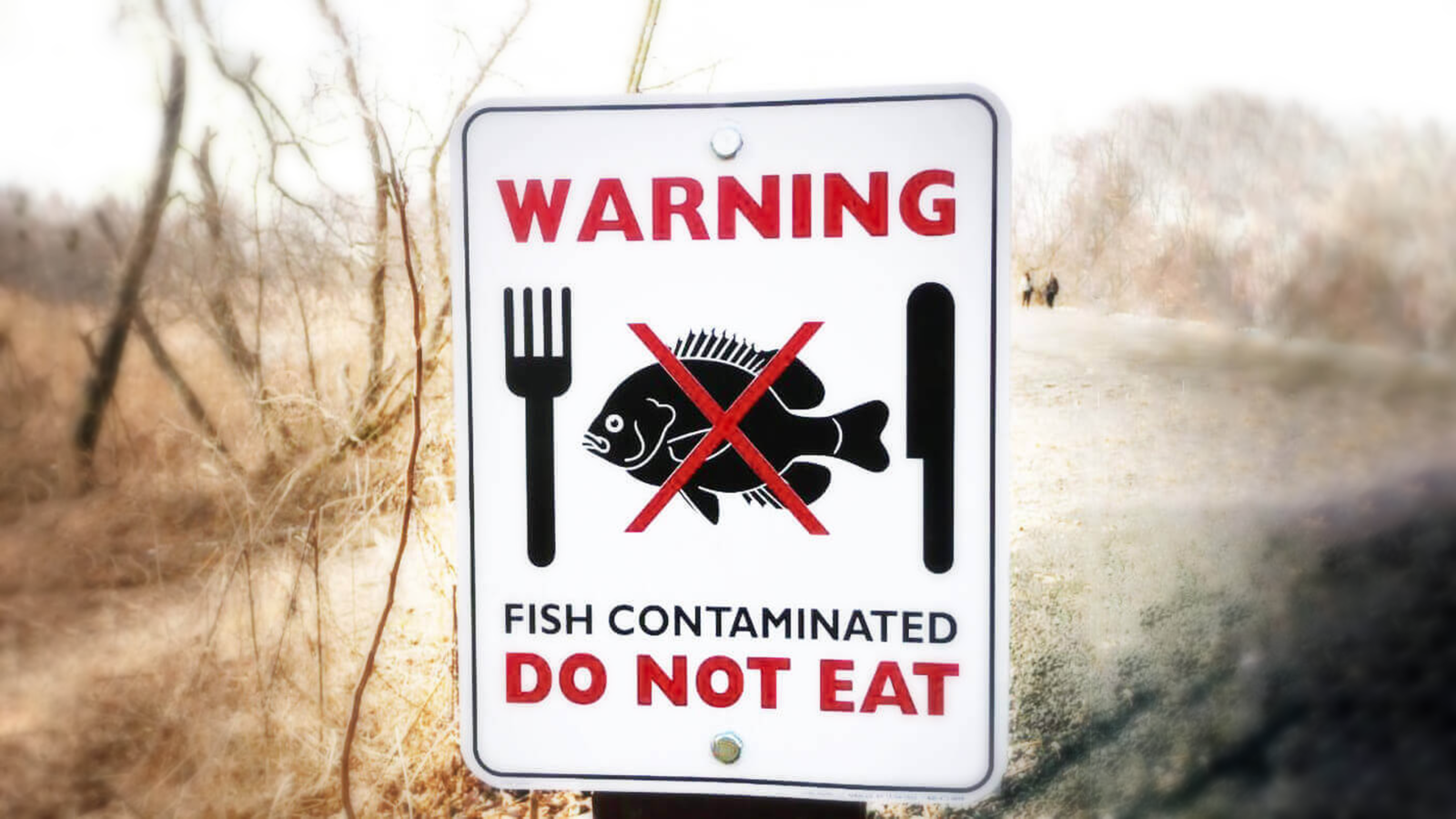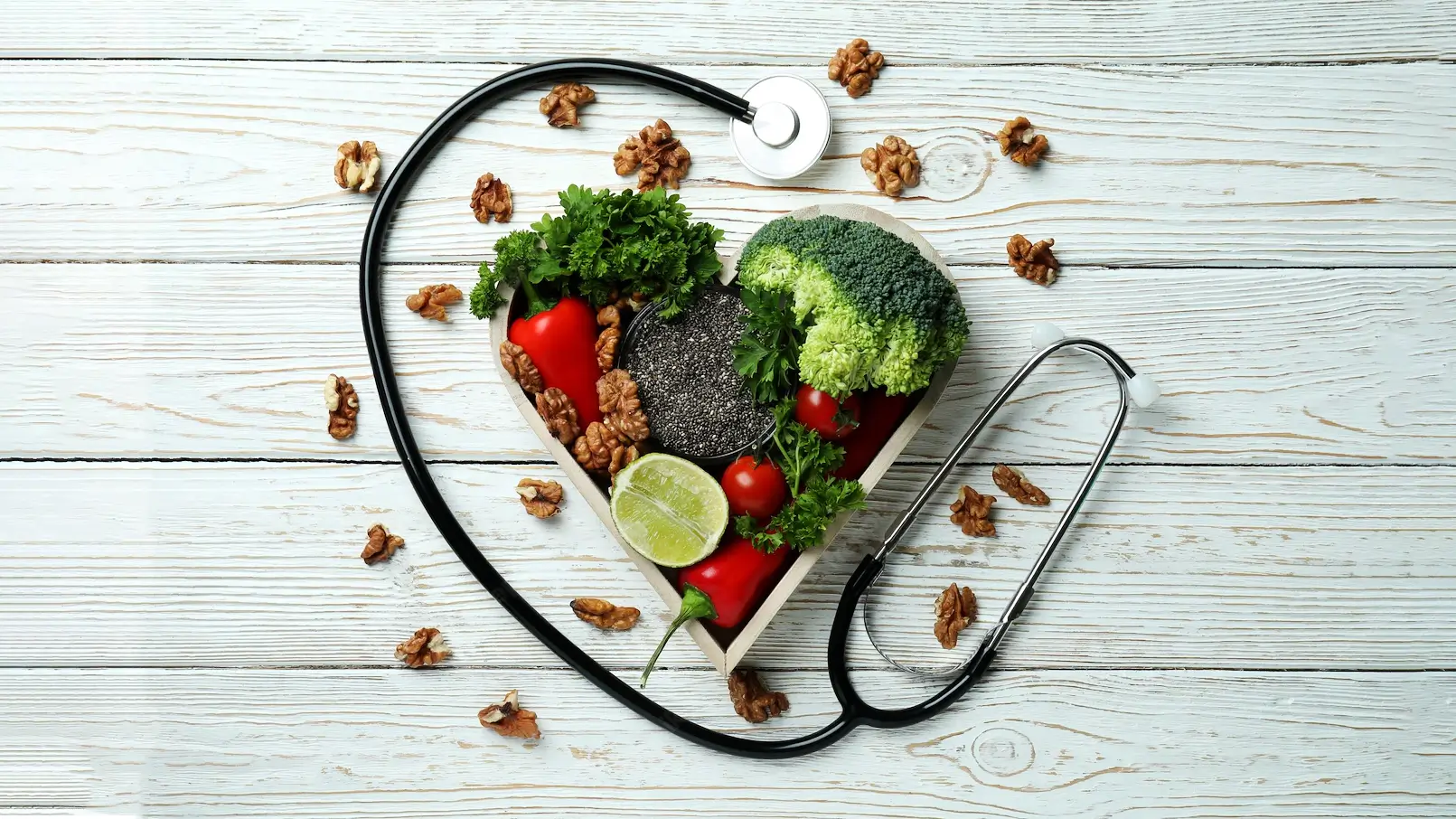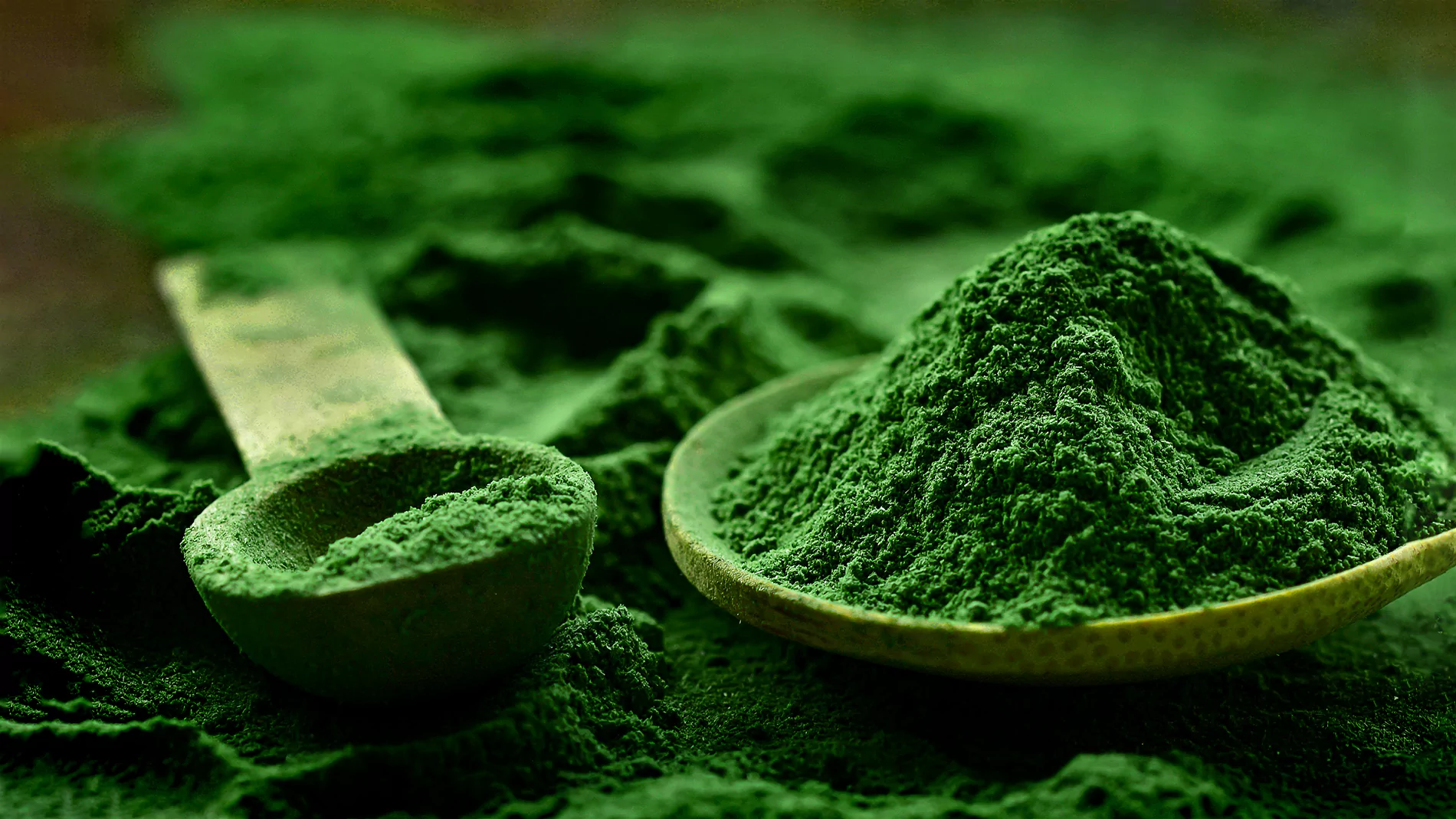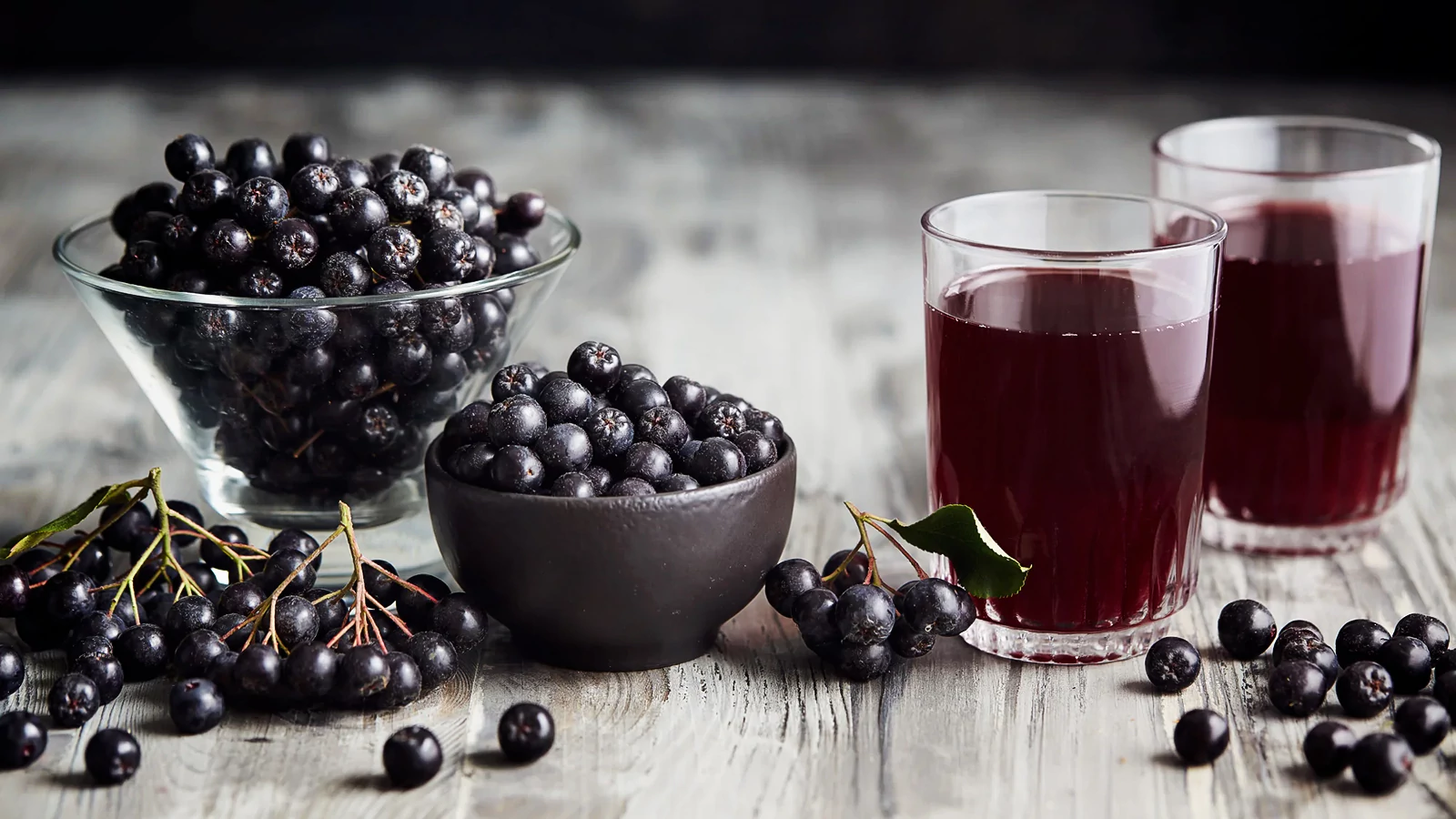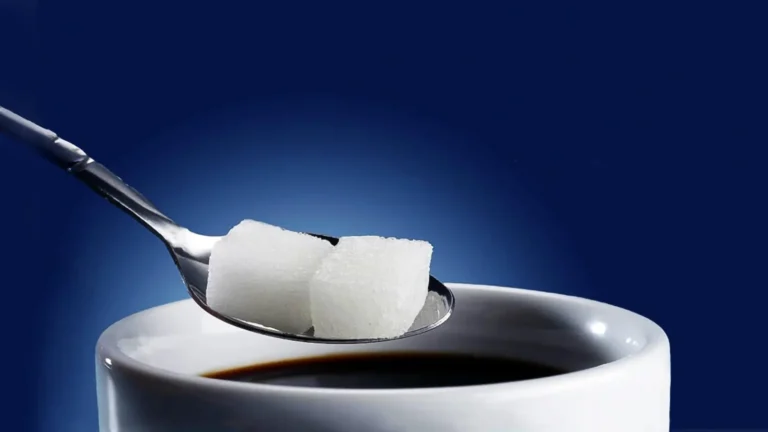Sulforaphane Benefits: Detoxifying Superpower of Broccoli
Sulforaphane is the most potent natural phase 2 enzyme-inducer know to science. It is also an inhibitor of carcinogen-induced tumorigenesis.
Milos Pokimica
Written By: Milos Pokimica
Medically Reviewed by: Dr. Xiùying Wáng, M.D.
Updated January 17, 2024Key Takeaways:
– Among the different types of vegetables, cruciferous vegetables stand out for their health benefits.
– Glucosinolates are compounds that are found almost exclusively in cruciferous vegetables. They are responsible for the pungent smell and bitter taste of these vegetables.
– When you chop, chew, or cook cruciferous vegetables, glucosinolates are broken down into isothiocyanates. These are the active substances that have powerful health effects.
– Sulforaphane is a phytochemical produced by cruciferous vegetables as a natural insecticide.
– When you bite or chew broccoli, you damage the plant cells and release myrosinase, which then reacts with glucoraphanin and converts it to sulforaphane.
– The enzymes that create sulforaphane are heat sensitive but the sulforaphane itself is not.
– The optimal cooking method is what I like to call a chop-and-cook technique.
– The main reason why you would want to incorporate broccoli into your diet is because of its unique detoxicating and cancer-fighting properties.
– Sulforaphane is the most potent natural phase 2 enzyme inducer known to science.
– Short-term ingestion of broccoli sprout homogenates has been shown to reduce nasal inflammatory responses to oxidant pollutants (Riso et al., 2014).
– Eating broccoli sprouts significantly increases the levels of Phase II enzymes in the airway cells. About 100 times more detox enzyme expression!
– It is demonstrated that sulforaphane is a dose-related inhibitor of carcinogen-induced tumorigenesis.
– Sulforaphane can also help detoxify the brain as well. This is important when dealing with brain diseases where there is an accumulation of different substances such as essential tremor or Alzheimer’s disease.
– Several studies have shown that eating broccoli or broccoli sprouts can lower the risk of type 2 diabetes or improve glycemic control.
– Sulforaphane can inhibit the activity of angiotensin-converting enzyme (ACE), which converts angiotensin I to angiotensin II, a potent vasoconstrictor that raises blood pressure (M. Zhang et al., 2019).
– Sulforaphane can suppress the expression of myostatin and its receptor in muscle cells, and increase the expression of follistatin, which is a protein that antagonizes myostatin (Fan et al., 2012). By modulating the myostatin-follistatin axis, isothiocyanates can stimulate muscle growth and prevent muscle atrophy.
Cruciferous Vegetables.
You probably know that eating a balanced diet is good for your health. But did you know that some foods are more beneficial than others?
Among the different types of vegetables, cruciferous vegetables stand out for their health benefits.
Cruciferous vegetables include arugula (rocket), bok choy, broccoli, Brussels sprouts, cabbage, cauliflower, collard greens, daikon, horseradish, kale, kohlrabi, radish, turnips, wasabi, and watercress. They have been shown to protect against various health conditions, such as diabetes, heart disease, and cancer (Connolly et al., 2021). It’s all thanks to their unique phytochemicals called glucosinolates (Manchali et al., 2012; Miękus et al., 2020).
Glucosinolates are compounds that are found almost exclusively in cruciferous vegetables. They are responsible for the pungent smell and bitter taste of these vegetables. When you chop, chew, or cook cruciferous vegetables, glucosinolates are broken down into isothiocyanates. These are the active substances that have powerful health effects.
Isothiocyanates can act on different molecules and pathways in the cells and have anti-inflammatory, antioxidant, and anti-cancer effects.
Cruciferous vegetables contain a variety of glucosinolates and isothiocyanates that have different health effects. Some of the most common ones are sulforaphane (from broccoli), allyl isothiocyanate (from mustard), indole-3-carbinol (from cabbage), and phenethyl isothiocyanate (from watercress).
The recommended intake of cruciferous vegetables is at least 2-3 servings per week.

Summary:
Cruciferous veggies like broccoli and kale pack a potent punch of health-boosting glucosinolates, offering protection against diabetes, heart disease, and even cancer. Aim for at least 2-3 servings weekly to reap their benefits.
What Is Sulforaphane?
Sulforaphane is a phytochemical produced by cruciferous vegetables as a natural insecticide.
In 1992 researchers from John Hopkins University in Baltimore discovered that cruciferous vegetables and especially broccoli contained a substance referred to as glucoraphanin. It is a precursor to the natural antioxidant and cancer-inhibiting detoxifying isothiocyanate called sulforaphane.
Some phytochemicals besides antioxidant properties have other unique benefits for example helping our bodies detoxify by making our livers more efficient. One of them is sulforaphane.
Sulforaphane has been studied extensively since it was first discovered in broccoli and shown to prevent cancer in rats. Since then, more than 3000 studies have explored its effects on different animal models of disease, its mechanisms of action, and its potential benefits for humans in over 50 clinical trials.
Summary:
Broccoli’s secret weapon, sulforaphane, packs a powerful punch as a natural detoxifier and potential cancer inhibitor, backed by extensive research and over 3000 studies.
Creation of Sulforaphane.
Glucoraphanin is a precursor to Sulforaphane. It is another phytochemical that is converted to sulforaphane by an enzyme called myrosinase. This enzyme can be found in the broccoli plant or in your gut bacteria.
Glucoraphanin is stored in the broccoli plant, but it is separated from myrosinase, which can break it down.
When you bite or chew broccoli, you damage the plant cells and release myrosinase, which then reacts with glucoraphanin and converts it to sulforaphane. Sulforaphane is an unstable and reactive compound that can interact with various molecules and pathways in your cells, modulating their functions and protecting them from damage.
You don’t need to eat raw broccoli to get sulforaphane. You can also get it from gut bacteria, which can also produce myrosinase and convert glucoraphanin to sulforaphane. This conversion can be reduced by antibiotics or bowel cleansing, but it can also be enhanced by delivering glucoraphanin directly to the colon if, for example, you eat broccoli regularly the number of gut bacteria that produce myrosinase in the colon will grow.
This way, even if you eat cooked or processed cruciferous vegetables that have low myrosinase activity, you can still get some of the benefits of isothiocyanates. The emphasis here is on the word some.
Not all glucosinolates are converted into isothiocyanates by your gut bacteria. Some of them may be absorbed in your stomach or small intestine before reaching your colon.
You might also have a bad microbiome. Therefore, the amount and type of isothiocyanates you get from cruciferous vegetables may depend on cooking methods and your gut microbiota composition (Barba et al., 2016).
However still to make the most out of broccoli we ideally will have to eat it raw. And this might be unpleasant. Sulforaphane does not taste well and that is its exact purpose in nature. Sulforaphane is a natural insecticide that plants produce to defend themselves from being eaten.
Glucoraphanin and sulforaphane are not just important for your health, but also for the plant’s health. They are part of a larger group of compounds called glucosinolates, which help the plant defend itself against pathogens, herbivores, and environmental stress. These compounds also have a trade-off for the plants themself: they can reduce the plant’s growth and biomass. Therefore, different plants have different levels of glucosinolates, depending on their genetics and environment.
Summary:
Eat raw broccoli for maximum impact, or fuel your gut bacteria by regularly incorporating cruciferous veggies into your diet, as they can produce sulforaphane, even with cooked or processed options to some extent.
Cooking Methods to Increase Sulforaphane.
Eat broccoli, but there is a catch, it should be raw and well-chewed same as garlic. Also, broccoli sprouts contain 10–100 times the phase 2 inducer activity of mature broccoli plants.
If we want to boost liver function adding raw broccoli sprouts to the salad is a good option.
Supplement single-nutrient approaches to cancer prevention and detoxification, and inflammation lowering however have usually yielded worsening results. Isolated phytochemical approaches can be proven to be equally disappointing and are not recommended at least at the time being until supplemental sulforaphane is not thoroughly tested in double-blind studies on humans. So far broccoli extract which contains sulforaphane plus all other phytochemicals that are naturally present in the plant has been tested with positive results. Alternatively, eat raw broccoli.
The enzymes that create sulforaphane are heat sensitive but the sulforaphane itself is not.
If we freeze or cook before we bite, there is nothing in it. The more we chew, the better, and yes that is the taste that gives the broccoli bad raps. The same pesticide that forces the insects to spit the stuff out. The broccoli sprout taste is not that bad and can go nicely with a little salad dressing or in a sandwich.
The bottom line is to eat raw broccoli. Also, chew it well.
The other option is something I like to call chop and cook.
If you want to you can add it to a green smoothie or blend it and let it sit there for some time and then use it for something maybe soup. If we destroy the cell walls of the plant by any method like slicing or blending the sulforaphane will form. Because sulforaphane after formation is heat stable we can cook the cooped broccoli afterwards in any way we want.
On another hand, if we steam cook the entire broccoli before cooping which is somehow a standard in the health community there will still be a reduction in sulforaphane content. We should chop as much as we can and after 5 minutes we can cook.
It is correct that steam cooking is the best cooking method for the preservation of phytochemicals in this case sulforaphane, however, sulforaphane will still denature at 80°C and above.
This is a reason why steaming is the preferable cooking method to maximize sulforaphane in the food but only if we compare it to other cooking methods such as boiling, microwaving, and pressure cooking (Shakour et al., 2021). All cooking methods that reach temperatures above 80°C are associated with significant sulforaphane losses up to more than 90% (Shakour et al., 2021).
Steam cooking the entire broccoli might be the best cooking method but it is still not the optimal cooking method.
The optimal cooking method is what I like to call a chop-and-cook technique.
However, there is one more option.
There was one study (Ghawi et al., 2013) that found the addition of raw powdered mustard seeds to heat-processed broccoli significantly increased the formation of sulforaphane.
Both mustard and broccoli are from the same family of plants and have these enzymes. The researchers found that adding a minor quantity of ground raw mustard seeds to the heat-processed broccoli significantly increased the formation of sulforaphane. The amount of sulforaphane that is formed in this way is almost identical to the amount that is formed when eating raw broccoli so if you do not dislike muster taste you can go for it.
The myrosinase enzyme is found in mustard seeds in horseradish, wasabi powder, or daikon radish.
And the seeds need to be raw. Adding mustard will have no effects only raw mustered freshly ground seeds will.
Summary:
Raw and well-chewed broccoli reigns supreme for sulforaphane, but if raw’s not your thing, “chop and cook” or adding raw mustard seeds to cooked broccoli offers effective alternatives to boost your intake.
Glucosinolate Content of Cruciferous Vegetables.
Glucosinolate is present almost exclusively in cruciferous vegetables and with adequate levels only in fresh broccoli.
Broccoli sprouts are the richest origin of glucosinolates and isothiocyanates.
In micromoles per gram mature broccoli has 64 glucosinolates, the number two kohlrabi 28, and cauliflower 11. Broccoli raab is just 0.13 not even worth mentioning. While broccoli, broccolini, and Chinese broccoli are closely related to cabbage, the closest kin to broccoli rabe is turnips. Also, there is no or very little sulforaphane in frizzed broccoli, cooked broccoli, and steamed broccoli, and actually, there is none in raw broccoli as well. It is only formed when something bites the broccoli flower as a defensive mechanism.
| Food (raw) | Serving | Total Glucosinolates (mg) |
| Brussels sprouts | ½ cup (44 g) | 104 |
| Garden cress | ½ cup (25 g) | 98 |
| Mustard greens | ½ cup, chopped (28 g) | 79 |
| Kale | 1 cup, chopped (67 g) | 67 |
| Turnip | ½ cup, cubes (65 g) | 60 |
| Cabbage, savoy | ½ cup, chopped (45 g) | 35 |
| Watercress | 1 cup, chopped (34 g) | 32 |
| Kohlrabi | ½ cup, chopped (67 g) | 31 |
| Cabbage, red | ½ cup, chopped (45 g) | 29 |
| Broccoli | ½ cup, chopped (44 g) | 27 |
| Horseradish | 1 tablespoon (15 g) | 24 |
| Cauliflower | ½ cup, chopped (50 g) | 22 |
| Bok choi (pak choi) | ½ cup, chopped (35 g) | 19 |
Detoxification.
Broccoli consumption is one of those food items that offer unique benefits.
Isothiocyanates can activate a protein called Nrf-2, which can turn on genes that produce enzymes called Phase II enzymes. Phase II enzymes are antioxidants that we produce by ourselves as a detoxification mechanism that can neutralize free radicals and prevent oxidative stress.
There is nothing besides these detoxifying enzymes that we would not be able to find in some other food items. There are foods that are much richer in terms of antioxidant content. There are foods that are much richer in terms of micronutrient content. There are foods that are much more palatable.
The main reason why you would want to incorporate broccoli into your diet is because of its unique detoxicating and cancer-fighting properties.
Especially if you have asthma or allergies or are a smoker or have some other respiratory issues.
Glucosinolates and isothiocyanates boost antioxidant status, induce phase 2 detoxification enzymes in the liver, and protect animals against chemically induced cancer.
Phase 1 enzymes activate or deactivate carcinogens. Phase 2 enzymes detoxify.
For more than 20 years researchers have known that eating cruciferous vegetables induces enzyme detoxification in experimental studies. Isothiocyanate sulforaphane is identified as the principal phase 2 inducer in broccoli extracts.
Sulforaphane is the most potent natural phase 2 enzyme inducer known to science.
Summary:
While broccoli isn’t the antioxidant king, its unique sulforaphane shines as a potent phase 2 enzyme inducer, aiding detoxification and potentially fighting cancer, making it a valuable dietary inclusion, especially for those with respiratory issues.
Asthma, Smoking, and Lung Inflammation.
Our bodies have detoxifying enzymes not just in the liver but in the lungs and throat to help us deal with air pollutants directly before they enter the bloodstream. Some people are born with less active detox enzymes in the airways and have an allergic reaction to pollutants in the air like diesel exhaust and can have asthma attacks. These enzymes clean the pollutants from the air which enter our lungs and lower inflammation.
The estimate was that 15-20 percent of the general population has some defective enzymatic functions in air pathways making them prone to allergic reactions and asthma.
Short-term ingestion of broccoli sprout homogenates has been shown to reduce nasal inflammatory responses to oxidant pollutants (Riso et al., 2014).
There are the same enzymes in our air pathways that exist in the liver. So sulforaphane increases the effectiveness of our lungs too, not just the liver.
In smokers, C reactive protein (inflammation marker) can be elevated 20 years after quitting. However, when smokers who still smoke consume raw broccoli (250 grams a day) for just 10 days, their plasma C reactive protein level decreases by half or 48% (Riso et al., 2014).
If you are a smoker, you may want to include more broccoli and other cruciferous vegetables in your diet. Eating broccoli may help you reduce some of its harmful effects.
The results also showed that eating broccoli significantly increased the levels of folate and lutein, which are important nutrients for your health (Riso et al., 2014). Folate is involved in DNA synthesis and repair, while lutein is one of the rare antioxidants that crosses the blood-brain barrier and protects your brain, eyes, and skin. However, eating broccoli did not affect the levels of TNF-a, IL-6, IL-6sR, or adiponectin, which are cytokines that regulate inflammation and immunity only C reactive protein.
The effect was independent of the changes in lutein and folate levels, suggesting that other compounds in broccoli may be responsible for lowering C reactive protein.
This in my interpretation means that broccoli’s overall antioxidant power is not enough on the ORAC scale to lower the entire systemic inflammation. However, because it is so potent in detoxifying the pollution it helps with direct smoking inflammation in the lungs.
This is a primary reason why no matter how rich your antioxidant diet is the consumption of sulforaphane provides unique benefits. Even if you are consuming a million units a day on an ORAC score broccoli would still bring its unique benefits.
That is a reason why phytochemical synergy is always better than isolated substances in excessive amounts. Having diversity in the diet is one of the pillar concepts of nutrition and broccoli and other cruciferous vegetables are one of the food groups that we should include no matter how much we or our children dislike the taste.

In conclusion, this study suggests that eating broccoli may lower inflammation in smokers, which could reduce their risk of developing chronic diseases (pdf). This is consistent with other studies that have shown that eating more fruits and vegetables is associated with lower levels of inflammation and better health outcomes.
Cellular oxidative stress is also an important factor in asthma. If you suffer from asthma, you may have trouble breathing when you are exposed to certain pollens or pollutants. These substances can cause oxidative stress in your airways, which means that they damage your cells and tissues by producing harmful molecules called free radicals. Oxidative stress can trigger inflammation and constriction of your airways, making it harder for you to breathe.
In this study (Riedl et al., 2009) they discovered that sulforaphane induces mucosal phase 2 enzyme expression in the upper airway of human subjects. The results showed that eating broccoli sprouts significantly increased the levels of Phase II enzymes in the airway cells and confirmed the effect of Phase 2 enzyme initiation in the airway as a method to decrease the inflammatory impacts of oxidative stress.
How much more? About 100 times more detox enzyme expression!
The researchers gave 65 healthy volunteers 100 grams of broccoli sprouts to eat raw every day for four days. Today there is no natural or synthetic substance that is more potent than sulforaphane for preventing allergic reactions to pollutants and detoxication.
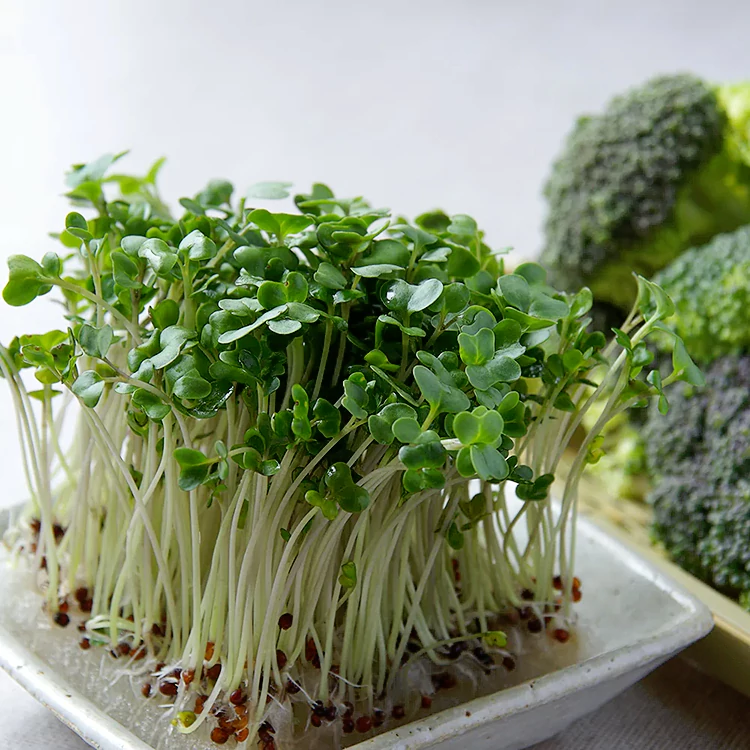
This means that eating broccoli sprouts can help us breathe better by enhancing our body’s ability to fight oxidative stress in our airways. This could potentially reduce the risk of developing asthma or other respiratory diseases and help people who already have respiratory problems.
This study was the first human clinical study done to demonstrate that oral sulforaphane can enhance Phase II enzyme expression in human airway cells.
The researchers were excited because results suggest that eating broccoli or other cruciferous vegetables could be a novel therapeutic strategy for preventing or treating oxidative stress-induced airway diseases.
The results represented an opportunity to make new patented medicine out of broccoli as a new line of drugs for asthma. However, this study was done back in 2009 and so far there are no new drugs. Natural phytochemicals cannot be patented by law. Your doctor can only prescribe you existing medicine that is patented. Broccoli extract you can use for yourself without a prescription. Or eat raw broccoli.
In this study in China (Egner et al., 2014) which has the highest level of air pollution in the world broccoli extract increased the levels of excretion of benzene by 61%, and acrolein by 23% (irritant for the skin, eyes, and nasal passages).
There was a big concern that this level of lowering inflammation response might be dangerous because it might end up lowering our inflammation response to influenza viruses too. The studies that looked into this, showed no immune suppressive effect but completely the opposite, increasing the immune effect besides lowering the inflammation. The best of both worlds.
Broccoli consumption is one of those food items that offer unique benefits.
Summary:
Broccoli, especially sprouts, shines for lung health by boosting detox enzyme activity, potentially reducing asthma risk and aiding smokers in lowering inflammation. Its unique benefits beyond antioxidant power make it a dietary must, even if raw consumption isn’t your favorite.
Cancer.
There is one exceptional property of cruciferous vegetables in general and that is that they have very strong cancer-prevention abilities.
It is demonstrated that sulforaphane is a dose-related inhibitor of carcinogen-induced tumorigenesis.
Sulforaphane is recognized for its protective effects on numerous types of cancer, including lung, prostate, breast, liver, and colon (Soundararajan and Kim, 2018; Livingstone et al., 2019; Mahn and Castillo, 2021).
Sulforaphane can inhibit the growth of blood vessels that feed the tumor, stop the proliferation of cancer cells, and induce cell death (apoptosis). Sulforaphane can also affect the metabolism of cancer cells, by reducing the expression of genes involved in glycolysis, which is the process of breaking down glucose for energy. Sulforaphane can also affect the cell cycle, by blocking the transition from one phase to another and increasing the acetylation of histones, which are proteins that regulate gene expression.
Recent studies have also indicated that sulforaphane treatment in combination with anti-cancer treatments such as chemotherapy, can make cancer cells more sensitive to these treatments (Jabbarzadeh Kaboli et al., 2020), reduce their toxic side effects (Calcabrini et al., 2020), and inhibit key survival pathways in cancer progression (Mokhtari et al., 2021). This suggests that sulforaphane could not only be a potential drug candidate but also be used as an adjuvant therapy to enhance the effectiveness and safety of current anti-cancer treatments.
Summary:
Sulforaphane packs a powerful punch against cancer, inhibiting tumor growth, inducing cell death, and even boosting the effectiveness of conventional cancer treatments.
Protects the Brain From Damage.
Several studies have shown that sulforaphane treatment can protect against neurodegenerative diseases, such as Parkinson’s disease (Morroni et al., 2013), Huntington’s disease (Li et al., 2014), and multiple sclerosis. Sulforaphane treatment can also improve cognitive function in different animal models of Alzheimer’s disease (Zhang et al., 2014).
These diseases are characterized by the loss of neurons and the accumulation of harmful proteins, such as amyloid beta (Aβ), which can cause oxidative stress and inflammation in the brain.
Isothiocyanates can cross the blood-brain barrier and modulate the activity of neurotransmitters and neuroinflammation.
They can protect neurons from degeneration and dysfunction caused by toxins or stress.
Sulforaphane can also help detoxify the brain as well. This is important when dealing with brain diseases where there is an accumulation of different substances such as essential tremor or Alzheimer’s disease.
By detoxifying the brain, it can lower your risk of developing neurological disorders and help with regular brain shrinkage with aging.
By activating Nrf2, sulforaphane can increase the expression and the activity of the proteasome, which is a complex of enzymes that breaks down damaged or unwanted proteins in cells (Pickering et al., 2012). The proteasome can help your brain get rid of harmful proteins, such as Aβ, which can prevent oxidative stress and cell death
But sulforaphane can also enhance another process called autophagy, which is the recycling of damaged cells. Autophagy can also help cells clear out unwanted, precancerous, mutated cells or harmful proteins, such as Aβ.
Summary:
Sulforaphane shields the brain from neurodegenerative diseases like Parkinson’s and Alzheimer’s by detoxifying, protecting neurons, and clearing harmful proteins, offering the potential for both disease prevention and cognitive decline mitigation.
Cardiometabolic Diseases.
Isothiocyanates can modulate various biological processes in your body, such as inflammation, detoxification, cell cycle, apoptosis, and gene expression.
They can also interact with different receptors and enzymes that regulate your metabolism, blood pressure, blood sugar, and cholesterol levels. By doing so, they can lower your risk of developing cardiometabolic diseases.
Several studies have shown that eating broccoli or broccoli sprouts can lower the risk of type 2 diabetes or improve glycemic control in people with type 2 diabetes.
For example In this study (Axelsson et al., 2017), obese patients with dysregulated diabetes consumed broccoli sprout extract and improved both fasting glucose and HbA1c (7.4%).
Sulforaphane can also help you lower your blood pressure by affecting the renin-angiotensin system (RAS), which is a hormone system that regulates blood pressure and fluid balance.
Sulforaphane can inhibit the activity of angiotensin-converting enzyme (ACE), which converts angiotensin I to angiotensin II, a potent vasoconstrictor that raises blood pressure (M. Zhang et al., 2019).
Angiotensin II is a hormone that causes the blood vessels to narrow and the blood volume to increase, which leads to higher blood pressure and more strain on the heart.
ACE inhibitors are a class of drugs that block the action of ACE and prevent the formation of angiotensin II. They are commonly used to treat high blood pressure, heart failure, and other cardiovascular conditions.
Sulforaphane can act as a natural ACE inhibitor and lower blood pressure by affecting the renin-angiotensin system, which is a hormone system that regulates blood pressure and fluid balance. Sulforaphane can also activate Nrf2 and protect the blood vessels from oxidative stress and inflammation, which are also factors in the development of hypertension and cardiovascular diseases.
Summary:
Sulforaphane tackles cardiometabolic risks like type 2 diabetes and high blood pressure by regulating blood sugar and acting as a natural ACE inhibitor, all while shielding blood vessels from damage. Consider broccoli for potential heart and metabolic health benefits.
Bones and Muscles.
Isothiocyanates can also influence your bones and muscles. They can stimulate bone formation and inhibit bone resorption. They can also prevent muscle atrophy and improve muscle strength. By doing so, they can lower your risk of developing musculoskeletal conditions.
One of the ways that isothiocyanates can improve your musculoskeletal health is by reducing inflammation and oxidative stress, which are major factors in the development of muscle wasting and bone loss.
Another way that isothiocyanates can improve your musculoskeletal health is by modulating the expression of genes and the activity of myostatin, which is a protein that inhibits muscle growth and differentiation.
Isothiocyanates can suppress the expression of myostatin and its receptor in muscle cells, and increase the expression of follistatin, which is a protein that antagonizes myostatin (Fan et al., 2012). By modulating the myostatin-follistatin axis, isothiocyanates can stimulate muscle growth and prevent muscle atrophy.

Summary:
Broccoli’s isothiocyanates combat bone loss and muscle wasting by reducing inflammation and suppressing muscle growth inhibitors, making it a potential ally for musculoskeletal health.
Risks and Side Effects.
Broccoli and sulforaphane are generally considered safe and healthy foods, but they may have some risks and side effects for certain people or in large amounts. Here are some of the possible risks and side effects of broccoli and sulforaphane:
- Broccoli and sulforaphane may interfere with the metabolism of some medications that are changed and broken down by the liver, such as acetaminophen, caffeine, and some antidepressants. This may increase or decrease the effects and side effects of these drugs.
- Broccoli and sulforaphane may cause allergic reactions in some people, such as itching, swelling, hives, or difficulty breathing. People who are allergic to other cruciferous vegetables, such as cabbage, cauliflower, or kale, may also be allergic to broccoli and sulforaphane.
- Broccoli and sulforaphane may cause digestive problems in some people, such as gas, bloating, diarrhea, or constipation. This may be due to the high fiber content or the sulfur compounds in these foods. People with irritable bowel syndrome (IBS) or inflammatory bowel disease (IBD) may be more sensitive to these effects.
- Broccoli and sulforaphane may affect thyroid function in some people, especially those who have low iodine intake or existing thyroid problems. This is because these foods contain goitrogens, which are substances that can interfere with the production of thyroid hormones. Cooking broccoli can reduce the goitrogenic activity, but not completely eliminate it.
- Broccoli and sulforaphane may lower blood sugar levels in some people, especially those who have diabetes or take medications that affect blood sugar. This may require adjusting the dose of insulin or other diabetes drugs. People with diabetes should monitor their blood sugar levels closely when eating broccoli or taking sulforaphane supplements.
- Broccoli and sulforaphane may lower blood pressure in some people, especially those who have hypertension or take medications that affect blood pressure. This may require adjusting the dose of antihypertensive drugs. People with hypertension should monitor their blood pressure levels closely when eating broccoli or taking sulforaphane supplements.
In summary, broccoli and sulforaphane are generally safe and healthy foods, but they may have some risks and side effects for certain people or in large amounts. It is advisable to consult a doctor before taking broccoli or sulforaphane supplements, especially if you have any medical conditions or take any medications that may interact with these foods. It is also recommended to eat broccoli and other cruciferous vegetables in moderation and vary your diet with other types of vegetables and fruits.
Supplements and Dosage.
Some people may choose to take sulforaphane or broccoli extract as a supplement to ensure a consistent and adequate intake or just to avoid having to eat broccoli every day.
There is no standard recommended dose of sulforaphane or broccoli extract for any specific condition. The dose may vary depending on the individual’s health status, and the desired outcome.
However, in studies, doses have ranged from 10 to 150 micromoles (μmol) of sulforaphane per day, which is equivalent to about 0.6 to 9.4 milligrams (mg) of sulforaphane. For comparison, one cup (91 grams) of raw broccoli contains about 73 μmol of sulforaphane.
Broccoli extract is a product that contains glucoraphanin, the precursor of sulforaphane, and may or may not contain myrosinase, the enzyme that converts glucoraphanin to sulforaphane. On the positive side, broccoli extract also contains all of the other phytochemicals naturally present in broccoli plants that might have health benefits as well. Single monotherapies of individual phytochemicals have traditionally proven to have less beneficial effects than whole food sources.
Sulforaphane supplements on the other hand are products that contain pure or stabilized sulforaphane, without the need for myrosinase activation. They may have higher potency and consistency than broccoli extract products, but they may also have higher costs and lower availability and are lacking all other synergistic phytochemicals.
Therefore, the best choice may depend on your personal preference, budget, and health goals.
Broccoli extract supplements may also contain myrosinase in addition to the extract or other ingredients that enhance the bioavailability of sulforaphane. Therefore, it is important to read the label carefully and follow the instructions for each product.
It is also advisable to consult a healthcare provider before taking any supplements, especially if you have any medical conditions or take any medications that may interact with sulforaphane.
You may also want to eat a variety of cruciferous vegetables in moderation to get the benefits of other nutrients and phytochemicals besides sulforaphane.
Summary:
Broccoli extract, with its natural blend of sulforaphane and other beneficial phytochemicals, offers a convenient alternative to raw broccoli, while pure sulforaphane supplements provide concentrated potency but lack wider nutritional benefits.
FAQ
References:
- Connolly, E. L., Sim, M., Travica, N., Marx, W., Beasy, G., Lynch, G. S., Bondonno, C. P., Lewis, J. R., Hodgson, J. M., & Blekkenhorst, L. C. (2021). Glucosinolates From Cruciferous Vegetables and Their Potential Role in Chronic Disease: Investigating the Preclinical and Clinical Evidence. Frontiers in pharmacology, 12, 767975. https://doi.org/10.3389/fphar.2021.767975
- Barba, F. J., Nikmaram, N., Roohinejad, S., Khelfa, A., Zhu, Z., & Koubaa, M. (2016). Bioavailability of Glucosinolates and Their Breakdown Products: Impact of Processing. Frontiers in nutrition, 3, 24. https://doi.org/10.3389/fnut.2016.00024
- Miękus, N., Marszałek, K., Podlacha, M., Iqbal, A., Puchalski, C., & Świergiel, A. H. (2020). Health Benefits of Plant-Derived Sulfur Compounds, Glucosinolates, and Organosulfur Compounds. Molecules (Basel, Switzerland), 25(17), 3804. https://doi.org/10.3390/molecules25173804
- Manchali, S., Murthy, K. N. C., & Patil, B. S. (2012). Crucial facts about health benefits of popular cruciferous vegetables. Journal of Functional Foods, 4(1), 94–106. https://doi.org/10.1016/j.jff.2011.08.004
- Shakour, Z. T., Shehab, N. G., Gomaa, A. S., Wessjohann, L. A., & Farag, M. A. (2022). Metabolic and biotransformation effects on dietary glucosinolates, their bioavailability, catabolism and biological effects in different organisms. Biotechnology advances, 54, 107784. https://doi.org/10.1016/j.biotechadv.2021.107784
- Morroni, F., Tarozzi, A., Sita, G., Bolondi, C., Zolezzi Moraga, J. M., Cantelli-Forti, G., & Hrelia, P. (2013). Neuroprotective effect of sulforaphane in 6-hydroxydopamine-lesioned mouse model of Parkinson’s disease. Neurotoxicology, 36, 63–71. https://doi.org/10.1016/j.neuro.2013.03.004
- Liu, Y., Hettinger, C. L., Zhang, D., Rezvani, K., Wang, X., & Wang, H. (2014). Sulforaphane enhances proteasomal and autophagic activities in mice and is a potential therapeutic reagent for Huntington’s disease. Journal of neurochemistry, 129(3), 539–547. https://doi.org/10.1111/jnc.12647
- Zhang, R., Miao, Q. W., Zhu, C. X., Zhao, Y., Liu, L., Yang, J., & An, L. (2015). Sulforaphane ameliorates neurobehavioral deficits and protects the brain from amyloid β deposits and peroxidation in mice with Alzheimer-like lesions. American journal of Alzheimer’s disease and other dementias, 30(2), 183–191. https://doi.org/10.1177/1533317514542645
- Skugor, A., Kjos, N. P., Sundaram, A. Y. M., Mydland, L. T., Ånestad, R., Tauson, A. H., & Øverland, M. (2019). Effects of long-term feeding of rapeseed meal on skeletal muscle transcriptome, production efficiency and meat quality traits in Norwegian Landrace growing-finishing pigs. PloS one, 14(8), e0220441. https://doi.org/10.1371/journal.pone.0220441
- Livingstone, T. L., Beasy, G., Mills, R. D., Plumb, J., Needs, P. W., Mithen, R., & Traka, M. H. (2019). Plant Bioactives and the Prevention of Prostate Cancer: Evidence from Human Studies. Nutrients, 11(9), 2245. https://doi.org/10.3390/nu11092245
- Mahn, A., & Castillo, A. (2021). Potential of Sulforaphane as a Natural Immune System Enhancer: A Review. Molecules (Basel, Switzerland), 26(3), 752. https://doi.org/10.3390/molecules26030752
- Jabbarzadeh Kaboli, P., Afzalipour Khoshkbejari, M., Mohammadi, M., Abiri, A., Mokhtarian, R., Vazifemand, R., Amanollahi, S., Yazdi Sani, S., Li, M., Zhao, Y., Wu, X., Shen, J., Cho, C. H., & Xiao, Z. (2020). Targets and mechanisms of sulforaphane derivatives obtained from cruciferous plants with special focus on breast cancer – contradictory effects and future perspectives. Biomedicine & pharmacotherapy = Biomedecine & pharmacotherapie, 121, 109635. https://doi.org/10.1016/j.biopha.2019.109635
- Calcabrini, C., Maffei, F., Turrini, E., & Fimognari, C. (2020). Sulforaphane Potentiates Anticancer Effects of Doxorubicin and Cisplatin and Mitigates Their Toxic Effects. Frontiers in pharmacology, 11, 567. https://doi.org/10.3389/fphar.2020.00567
- Mokhtari, R. B., Qorri, B., Baluch, N., Sparaneo, A., Fabrizio, F. P., Muscarella, L. A., Tyker, A., Kumar, S., Cheng, H. M., Szewczuk, M. R., Das, B., & Yeger, H. (2021). Next-generation multimodality of nutrigenomic cancer therapy: sulforaphane in combination with acetazolamide actively target bronchial carcinoid cancer in disabling the PI3K/Akt/mTOR survival pathway and inducing apoptosis. Oncotarget, 12(15), 1470–1489. https://doi.org/10.18632/oncotarget.28011
- Pickering, A. M., Linder, R. A., Zhang, H., Forman, H. J., & Davies, K. J. A. (2012). Nrf2-dependent induction of proteasome and Pa28αβ regulator are required for adaptation to oxidative stress. The Journal of biological chemistry, 287(13), 10021–10031. https://doi.org/10.1074/jbc.M111.277145
- Traka, M. H., Melchini, A., Coode-Bate, J., Al Kadhi, O., Saha, S., Defernez, M., Troncoso-Rey, P., Kibblewhite, H., O’Neill, C. M., Bernuzzi, F., Mythen, L., Hughes, J., Needs, P. W., Dainty, J. R., Savva, G. M., Mills, R. D., Ball, R. Y., Cooper, C. S., & Mithen, R. F. (2019). Transcriptional changes in prostate of men on active surveillance after a 12-mo glucoraphanin-rich broccoli intervention-results from the Effect of Sulforaphane on prostate CAncer PrEvention (ESCAPE) randomized controlled trial. The American journal of clinical nutrition, 109(4), 1133–1144. https://doi.org/10.1093/ajcn/nqz012
- Zhang, M., Xu, Y., Qiu, Z., & Jiang, L. (2019). Sulforaphane Attenuates Angiotensin II-Induced Vascular Smooth Muscle Cell Migration via Suppression of NOX4/ROS/Nrf2 Signaling. International journal of biological sciences, 15(1), 148–157. https://doi.org/10.7150/ijbs.28874
- Axelsson, A. S., Tubbs, E., Mecham, B., Chacko, S., Nenonen, H. A., Tang, Y., Fahey, J. W., Derry, J. M. J., Wollheim, C. B., Wierup, N., Haymond, M. W., Friend, S. H., Mulder, H., & Rosengren, A. H. (2017). Sulforaphane reduces hepatic glucose production and improves glucose control in patients with type 2 diabetes. Science translational medicine, 9(394), eaah4477. https://doi.org/10.1126/scitranslmed.aah4477
- Fan, H., Zhang, R., Tesfaye, D., Tholen, E., Looft, C., Hölker, M., Schellander, K., & Cinar, M. U. (2012). Sulforaphane causes a major epigenetic repression of myostatin in porcine satellite cells. Epigenetics, 7(12), 1379–1390. https://doi.org/10.4161/epi.22609
- Riso, P., Vendrame, S., Del Bo’, C., Martini, D., Martinetti, A., Seregni, E., Visioli, F., Parolini, M., & Porrini, M. (2014). Effect of 10-day broccoli consumption on inflammatory status of young healthy smokers. International journal of food sciences and nutrition, 65(1), 106–111. https://doi.org/10.3109/09637486.2013.830084
- Riedl, M. A., Saxon, A., & Diaz-Sanchez, D. (2009). Oral sulforaphane increases Phase II antioxidant enzymes in the human upper airway. Clinical immunology (Orlando, Fla.), 130(3), 244–251. https://doi.org/10.1016/j.clim.2008.10.007
- Egner, P. A., Chen, J. G., Zarth, A. T., Ng, D. K., Wang, J. B., Kensler, K. H., Jacobson, L. P., Muñoz, A., Johnson, J. L., Groopman, J. D., Fahey, J. W., Talalay, P., Zhu, J., Chen, T. Y., Qian, G. S., Carmella, S. G., Hecht, S. S., & Kensler, T. W. (2014). Rapid and sustainable detoxication of airborne pollutants by broccoli sprout beverage: results of a randomized clinical trial in China. Cancer prevention research (Philadelphia, Pa.), 7(8), 813–823. https://doi.org/10.1158/1940-6207.CAPR-14-0103
- Ghawi, S. K., Methven, L., & Niranjan, K. (2013). The potential to intensify sulforaphane formation in cooked broccoli (Brassica oleracea var. italica) using mustard seeds (Sinapis alba). Food chemistry, 138(2-3), 1734–1741. https://doi.org/10.1016/j.foodchem.2012.10.119
- Kim, J. K., & Park, S. U. (2016). Current potential health benefits of sulforaphane. EXCLI journal, 15, 571–577. https://doi.org/10.17179/excli2016-485
- Bauman, J. E., Zang, Y., Sen, M., Li, C., Wang, L., Egner, P. A., Fahey, J. W., Normolle, D. P., Grandis, J. R., Kensler, T. W., & Johnson, D. E. (2016). Prevention of Carcinogen-Induced Oral Cancer by Sulforaphane. Cancer prevention research (Philadelphia, Pa.), 9(7), 547–557. https://doi.org/10.1158/1940-6207.CAPR-15-0290
- Wang, D. X., Zou, Y. J., Zhuang, X. B., Chen, S. X., Lin, Y., Li, W. L., Lin, J. J., & Lin, Z. Q. (2017). Sulforaphane suppresses EMT and metastasis in human lung cancer through miR-616-5p-mediated GSK3β/β-catenin signaling pathways. Acta pharmacologica Sinica, 38(2), 241–251. https://doi.org/10.1038/aps.2016.122
- Brown, R. H., Reynolds, C., Brooker, A., Talalay, P., & Fahey, J. W. (2015). Sulforaphane improves the bronchoprotective response in asthmatics through Nrf2-mediated gene pathways. Respiratory research, 16(1), 106. https://doi.org/10.1186/s12931-015-0253-z
Related Posts
Do you have any questions about nutrition and health?
I would love to hear from you and answer them in my next post. I appreciate your input and opinion and I look forward to hearing from you soon. I also invite you to follow us on Facebook, Instagram, and Pinterest for more diet, nutrition, and health content. You can leave a comment there and connect with other health enthusiasts, share your tips and experiences, and get support and encouragement from our team and community.
I hope that this post was informative and enjoyable for you and that you are prepared to apply the insights you learned. If you found this post helpful, please share it with your friends and family who might also benefit from it. You never know who might need some guidance and support on their health journey.
– You Might Also Like –

Learn About Nutrition
Milos Pokimica is a doctor of natural medicine, clinical nutritionist, medical health and nutrition writer, and nutritional science advisor. Author of the book series Go Vegan? Review of Science, he also operates the natural health website GoVeganWay.com
Medical Disclaimer
GoVeganWay.com brings you reviews of the latest nutrition and health-related research. The information provided represents the personal opinion of the author and is not intended nor implied to be a substitute for professional medical advice, diagnosis, or treatment. The information provided is for informational purposes only and is not intended to serve as a substitute for the consultation, diagnosis, and/or medical treatment of a qualified physician or healthcare provider.NEVER DISREGARD PROFESSIONAL MEDICAL ADVICE OR DELAY SEEKING MEDICAL TREATMENT BECAUSE OF SOMETHING YOU HAVE READ ON OR ACCESSED THROUGH GoVeganWay.com
NEVER APPLY ANY LIFESTYLE CHANGES OR ANY CHANGES AT ALL AS A CONSEQUENCE OF SOMETHING YOU HAVE READ IN GoVeganWay.com BEFORE CONSULTING LICENCED MEDICAL PRACTITIONER.
In the event of a medical emergency, call a doctor or 911 immediately. GoVeganWay.com does not recommend or endorse any specific groups, organizations, tests, physicians, products, procedures, opinions, or other information that may be mentioned inside.
Editor Picks –
Milos Pokimica is a health and nutrition writer and nutritional science advisor. Author of the book series Go Vegan? Review of Science, he also operates the natural health website GoVeganWay.com
Latest Articles –
Top Health News — ScienceDaily
- This cancer-fighting molecule took 50 years to buildon December 22, 2025
MIT scientists have achieved the first-ever lab synthesis of verticillin A, a complex fungal compound discovered in 1970. Its delicate structure stalled chemists for decades, despite differing from related molecules by only two atoms. With the synthesis finally complete, researchers created new variants that showed strong activity against a rare pediatric brain cancer. The breakthrough could unlock an entire class of previously unreachable cancer-fighting molecules.
- A new drug could stop Alzheimer’s before memory loss beginson December 22, 2025
New research suggests Alzheimer’s may start far earlier than previously thought, driven by a hidden toxic protein in the brain. Scientists found that an experimental drug, NU-9, blocks this early damage in mice and reduces inflammation linked to disease progression. The treatment was given before symptoms appeared, targeting the disease at its earliest stage. Researchers say this approach could reshape how Alzheimer’s is prevented and treated.
- Why one long walk may be better than many short oneson December 22, 2025
How you walk may matter just as much as how much you walk. A large UK study tracking more than 33,000 low-activity adults found that people who grouped their daily steps into longer, uninterrupted walks had dramatically lower risks of early death and heart disease than those who moved in short, scattered bursts.
- Parkinson’s breakthrough changes what we know about dopamineon December 22, 2025
A new study shows dopamine isn’t the brain’s movement “gas pedal” after all. Instead of setting speed or strength, it quietly enables movement in the background, much like oil in an engine. When scientists manipulated dopamine during movement, nothing changed—but restoring baseline dopamine levels made a big difference. The finding could reshape how Parkinson’s disease is treated.
- A traditional Brazilian plant shows unexpected strength against arthritison December 22, 2025
A Brazilian study has confirmed that Joseph’s Coat, a plant used for generations in folk medicine, can significantly reduce inflammation and arthritis symptoms in lab tests. Researchers observed less swelling, healthier joints, and signs of tissue protection. Just as important, the extract showed a promising safety profile at tested doses. The discovery could pave the way for new plant-based anti-inflammatory treatments.
- Study links full-fat cheese to lower dementia riskon December 22, 2025
Eating full-fat cheese and cream may be associated with a lower risk of dementia, according to a large study that tracked people for more than 25 years. Those who consumed higher amounts of these foods developed dementia less often than those who ate little or none. Interestingly, low-fat dairy products did not show the same pattern. Researchers caution that the findings show an association, not cause and effect.
- Science says we’ve been nurturing “gifted” kids all wrongon December 21, 2025
A major international review has upended long-held ideas about how top performers are made. By analyzing nearly 35,000 elite achievers across science, music, chess, and sports, researchers found that early stars rarely become adult superstars. Most world-class performers developed slowly and explored multiple fields before specializing. The message is clear: talent grows through variety, not narrow focus.
PubMed, #vegan-diet –
- Comparing diet-related attitudes, perceptions, and behaviors of vegan and omnivorous adults: results from a cross-sectional survey study in Germanyon December 22, 2025
CONCLUSION: The findings are consistent with and build on existing research on cognitive and behavioral patterns related to a vegan diet, while at the same time yielding some additional insights. In particular, the results on significant differences in the risk-benefit perception of a vegan diet, as well as on motivations and influences regarding the decision to follow a vegan diet provide an important basis for the development of public health interventions and a foundation for further […]
- Assessment of vitamin A, vitamin B2, vitamin B12, vitamin K, folate, and choline status following 4 months of multinutrient supplementation in healthy vegans: a randomised,…on December 19, 2025
CONCLUSION: A multinutrient supplement containing 82 µg of vitamin B(12) per day significantly positively affected vitamin B(12) blood biomarkers in healthy vegans.
- Exploring the synergistic potential of pH and ultrasonication on the functional properties of pea and lentil protein isolates and its formulation in food producton December 15, 2025
The substitution of meat proteins with plant-based proteins from various sources is often motivated by nutritional considerations. However, the inherent limited solubility of plant proteins, which results in suboptimal techno-functional properties, remains a persistent challenge in food formulation. The purpose of this study was to utilize unique properties of pea (Pisum sativum L.) and lentil (Lens culinaris) through ultrasonication and pH variation in order to develop a stable and […]
- Healthful and Unhealthful Plant-Based Diets and Their Association with Cardiometabolic Targets in Women Diagnosed with Breast Cancer: A Cross-Sectional Analysis of a Lifestyle Trialon December 11, 2025
CONCLUSIONS: Maintaining cardiometabolic risk factors within normal ranges is clinically relevant in BCS, and this may be more likely when a plant-based diet is consumed, especially if low in unhealthy plant foods.
- Functional and Nutritional Properties of Lion’s Mane Mushrooms in Oat-Based Desserts for Dysphagia and Healthy Ageingon December 11, 2025
Hericium erinaceus (Lion’s Mane mushroom) is a medicinal species recognised for its neuroprotective and antioxidant properties. This study investigated its potential as a functional ingredient in oat milk-based desserts formulated for individuals with dysphagia. Freeze-dried Lion’s Mane powder (LMP), containing high-quality protein (~16%, amino acid score 88%), dietary fibre (~31%), and phenolic compounds (72.15 mg GAE/g), was incorporated at varying levels using gelatin or iota-carrageenan […]
Random Posts –
Featured Posts –
Latest from PubMed, #plant-based diet –
- Associations Between Healthy and Plant-Based Dietary Patterns and Cognitive Reserve: A Cross-Sectional Analysis of the 1946 British Birth Cohortby Kelly C Cara on December 23, 2025
CONCLUSIONS: CR was positively associated with healthy dietary patterns and inversely associated with unhealthful plant-based dietary patterns. Diet uniquely explained variations in CR and should be considered among influential lifestyle factors in future research. Longitudinal analyses are needed to confirm these findings.
- Dietary quercetagetin attenuates H2O2-induced oxidative damage and preserves meat quality in broilers by modulating redox status and Nrf2/ferroptosis signaling pathwayby Wenyue Hu on December 22, 2025
In modern poultry production, oxidative stress has emerged as a pivotal factor compromising the health status and overall performance of broiler. The aim of this study was to investigate the effects of dietary quercetagetin (QG) supplementation on hydrogen peroxide (H(2)O(2))-induced oxidative damage in breast muscle of broilers, focusing on growth performance, meat quality, and antioxidant function, and elucidating the underlying mechanisms. Two hundred and forty one-day-old Cobb broilers […]
- Effects of dietary selenium supplementation on physiological parameters, tissue fatty acid composition, and fatty acid-metabolism relative gene expression of grouper (Epinephelus coioides) fed high…by Yen-Chun Lee on December 22, 2025
The present study evaluated the effects of dietary selenium (Se) supplementation on growth performance, physiological responses, tissue fatty acid profiles, and the expression of genes related to fatty acid metabolism in juvenile grouper (Epinephelus coioides). A control diet based on soy protein concentrate, replacing 40% of the fish meal protein, was supplemented with graded levels of Se at 0, 0.3, 0.6, and 1.0 mg Se kg^(-1). A fish meal-based reference diet was also included for […]
- Unravelling the interaction between feeding regimens and milking time in Parmigiano Reggiano PDO milk: an integrated metabolomics and ion mobility lipidomics approachby Pier Paolo Becchi on December 22, 2025
In this study, an integrated approach based on UHPLC-HRMS metabolomics and IM-HRMS lipidomics has been carried out to unravel the interaction between feeding and milking time in the overall chemical profile of Parmigiano Reggiano (PR) milk. Specifically, ANOVA multiblock OPLS (AMOPLS) modelling revealed the complementarity of the assays in combining the effect of these two critical parameters. In particular, metabolomics highlighted the presence of plant-derived compounds (mainly terpenoids […]
- Comparing diet-related attitudes, perceptions, and behaviors of vegan and omnivorous adults: results from a cross-sectional survey study in Germanyby Dan Borzekowski on December 22, 2025
CONCLUSION: The findings are consistent with and build on existing research on cognitive and behavioral patterns related to a vegan diet, while at the same time yielding some additional insights. In particular, the results on significant differences in the risk-benefit perception of a vegan diet, as well as on motivations and influences regarding the decision to follow a vegan diet provide an important basis for the development of public health interventions and a foundation for further […]
- The effect of dietary interventions on peripheral markers of inflammation among people with multiple sclerosis: A systematic review and meta-analysis of randomized controlled trialsby Wade R Pingel on December 21, 2025
CONCLUSIONS: Several dietary interventions may reduce systemic inflammation in PwMS, with greater effects in longer-duration interventions. Calorie-restricted diets did not significantly alter adipokines. Given the limited number and heterogeneity of studies, larger and longer RCTs using comparable dietary interventions are needed to confirm these findings.

